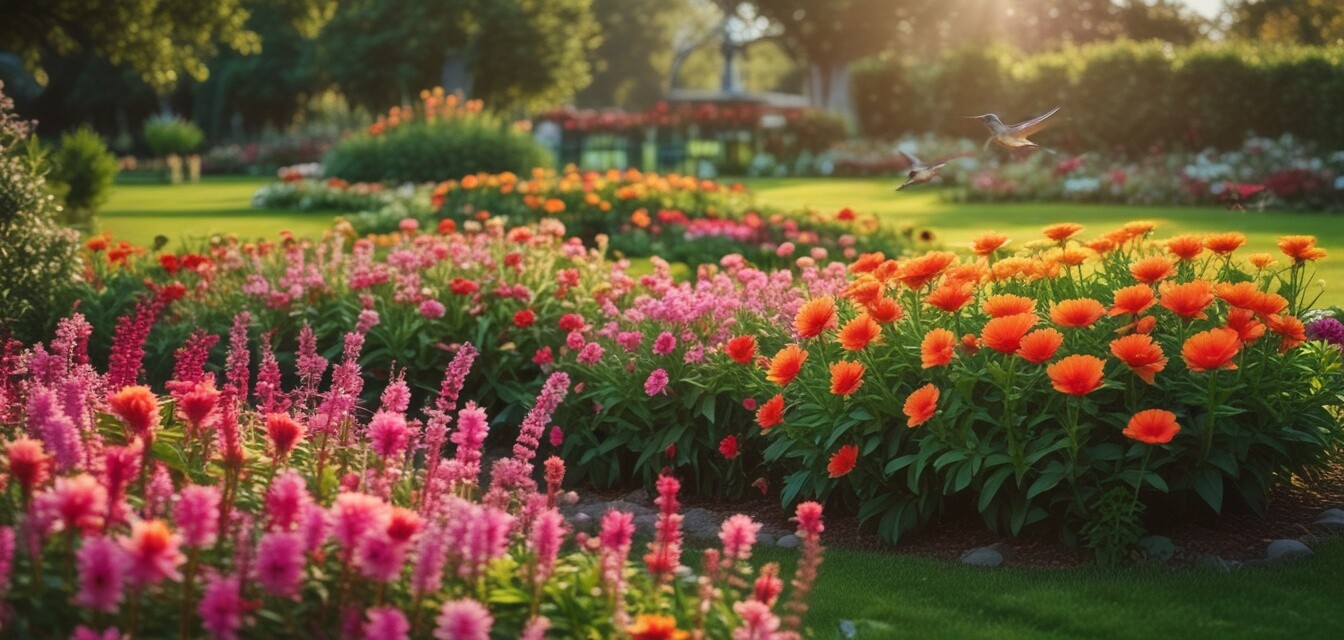
Plants That Attract Hummingbirds
Key Takeaways
- Hummingbirds are attracted to specific plants, primarily those with vibrant colors and tubular shapes.
- Planting a variety of species ensures a longer bloom time and a continuous food source.
- Incorporating native plants can enhance your garden’s biodiversity and attract more hummingbirds.
- Consider the placement of your plants to provide shelter and perching spots for these birds.
Creating a garden that attracts hummingbirds is rewarding and enhances the beauty of your outdoor space. These small, colorful birds not only bring life and motion to your garden but also play a crucial role in pollination. Here’s a guide to choosing the right plants to create a hummingbird haven in your garden.
Why hummingbirds are attracted to certain plants
Hummingbirds are typically drawn to flowers that provide nectar, particularly those that are bright in color and have a tubular shape. They are especially fond of red, orange, and pink flowers. Additionally, these birds have a fantastic memory, which helps them return to the same flowers day after day, making it essential to choose a variety of plants that bloom at different times throughout the season.
Best plants to attract hummingbirds
Here's a list of some plants, categorized by their blooming season, that you can incorporate into your garden to attract more hummingbirds:
| Plant Name | Blooming Season | Characteristics |
|---|---|---|
| Bee Balm | Summer-Fall | Bright red, pink or purple flowers; aromatic foliage. |
| Salvia | Spring-Summer | Long-blooming; available in various colors; attracts both hummingbirds and bees. |
| Cardinal Flower | Summer | Vibrant red flowers; prefers moist areas. |
| Trumpet Vine | Summer-Fall | Large, tubular flowers; attracts a variety of pollinators. |
| Zinnia | Summer-Fall | Bright and colorful flowers; easy to grow; attracts hummingbirds. |
Planting tips for a hummingbird-friendly garden
- Select plants with different blooming periods to ensure a continuous food supply.
- Group plants in clusters rather than planting them individually for better visibility and access.
- Avoid using pesticides and herbicides that can be harmful to hummingbirds.
- Provide additional water sources, such as birdbaths or small fountains.
- Consider adding perches nearby, as hummingbirds like to rest between feeding.
Additional elements to enhance your garden
Incorporating garden features can enhance your hummingbird experience. Here are some inspiring elements to consider:
- Outdoor lighting solutions can create a serene atmosphere during evening hours.
- Premium outdoor furniture can provide a comfortable space to enjoy your hummingbird visitors.
- Luxury planters can add a stylish touch to your garden while ensuring your plants thrive.
- Install a small greenhouse for better plant growth and protection from elements.
- Use an innovative irrigation system to efficiently water your plants.
Tips for beginners
- Start with a few easy-to-grow plants, and gradually expand as you gain confidence.
- Research regional plants that thrive in your climate for best results.
- Watch and learn from your garden; observe which plants attract the most hummingbirds.
Conclusion
By planting a selection of vibrant, nectar-rich plants, you can create a breathtaking hummingbird haven. Not only will your garden thrive with beauty, but you'll also enjoy the joy of watching these amazing birds as they flit from flower to flower. Remember to keep your outdoor space clean and pesticide-free to encourage an inviting environment. Happy gardening!
Pros
- Enhances the aesthetic appeal of your garden.
- Supports local wildlife and biodiversity.
- Offers enjoyment and entertainment as you observe the hummingbirds.
Cons
- Some plants may require specific growing conditions.
- Initial setup may involve research and planning.